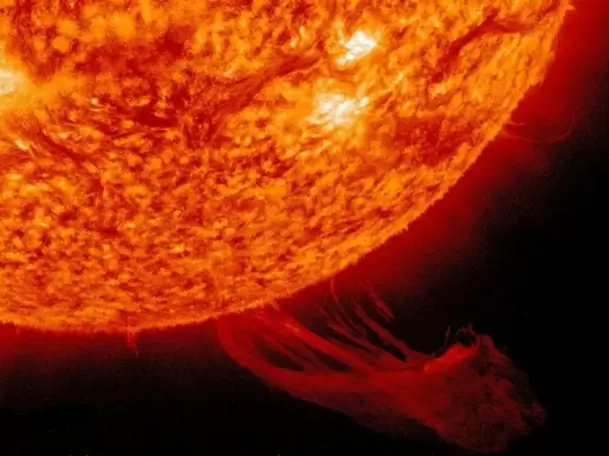Sun spews intense solar flare, sparks radio blackout in Asia, Australia
New Delhi
18-April-2022

Photo: IANS
The Sun has unleashed an intense solar flare, sparking radio blackouts in several parts of Asia and Australia.
The flare registered as an X1.1-class sun storm and lasted about 34 minutes, SWPC officials said.A
The flare originated from Regions 2994 and 2993, a cluster of active sunspots that has seen "significant flaring" since it appeared on the eastern limb of the Sun, according to the SWPC.
"Solar activity is expected to be active over the next week as these sunspots migrate across the visible disk," the agency said in an update.
The SWPC stated that the solar flare spawned a brief radio blackout and was classified as a Type II solar radio burst, the report said.
"A pulse of X-rays from the flare produced a strong shortwave radio blackout over southeast Asia and Australia," said NASA's Solar Dynamics Observatory, which recorded the X1-class solar flare.
Watch This TWL Video
"Mariners, aviators, and ham radio operators may have noticed unusual propagation effects at frequencies below 30 MHz," it added.
Coronagraph images from the Solar and Heliospheric Observatory (SOHO) confirm that the explosion hurled a CME into space.
Analysts at the National Oceanic and Atmospheric Administration, which oversees the SWPC, modelled the CME's trajectory and determined that it will miss Earth, passing behind our planet in its orbit around the sun, Spaceweather.com reported.
"Such bursts are produced by shock waves in the leading edges of CMEs," astronomer Tony Phillips was quoted as saying. Because the eruption occurred at the very eastern limb of the sun, the coronal mass ejection it spawned is likely not directed at Earth, Phillips said.
X-class solar flares are the strongest types of storms on the sun. The weakest sun flares are A-class, B- and C-class storms are also relatively moderate.
More powerful M-class storms and above can supercharge the Earth's northern lights displays while the strongest X-class storms can pose a risk to satellites and astronauts in orbit when aimed directly at Earth.
The latest solar flares come on the heels of an X1.3-class solar storm on March 30 and several C-class and M-class flares from different sunspot regions in recent weeks, the report said.
The sun is currently in an increasingly active phase of its 11-year solar weather cycle and the current cycle is known as Solar Cycle 25 which began in 2019. - IANS
More Headlines
Air India Faces Backlash as Elderly Passenger Denied Wheelchair Falls, Lands in ICU
Shiv Nadar Transfers 47% Stake in HCL Promoter Firms to Daughter Roshni
Telangana Cabinet decides to develop Future City on 30,000 acre
International Women's Day: Man in Bihar educates seven daughters, all serving the nation
TN lawyer files PIL in SC on NEP implementation in three states
Air India Faces Backlash as Elderly Passenger Denied Wheelchair Falls, Lands in ICU
Shiv Nadar Transfers 47% Stake in HCL Promoter Firms to Daughter Roshni
Telangana Cabinet decides to develop Future City on 30,000 acre
International Women's Day: Man in Bihar educates seven daughters, all serving the nation
TN lawyer files PIL in SC on NEP implementation in three states










